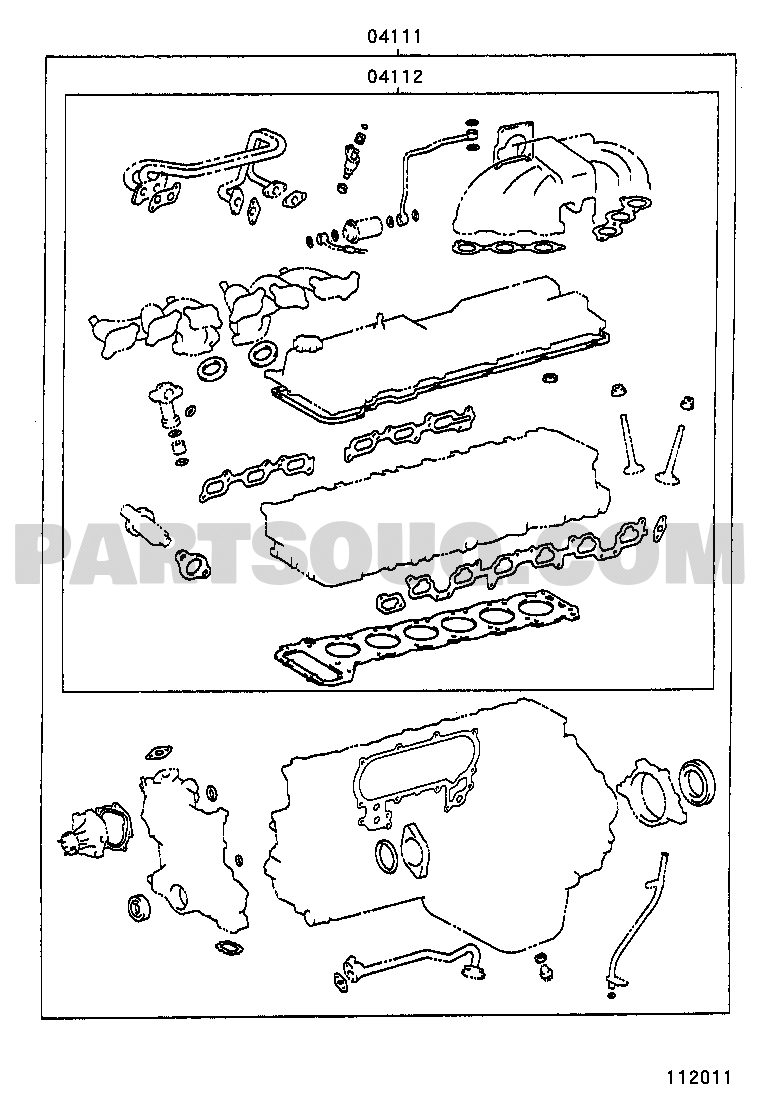I'm finishing this job right now, and, although I haven't added up the receipts, and I'm doing all but the machine work myself, I think the total is around $1500. That includes (approximately) $450 for the gasket set, $500 for the machine work and the remainder in other parts. I did not need any new head parts, but I did need 6 new head bolts.
There are many threads on this job, but, FWIW:
1) I didn't pull the engine. I won't do that again. It saves no time and once out, you can access all the engine/transmission/transfer/engine bay/undercarriage to clean/update/etc, while you're waiting for the head to return. You're also taking a really big chance that your bores are cylindrical. If they're not, once the head's out, there is very little practical way to pull the engine.
2) Plan on breaking some, or all, of the sensors, connectors, or both, on the intake side of the head/engine. You may not, but I lost 50% of them due to age-related material failure. Everything I broke is still available.
Ballenger has the OEM Sumitomo connectors, with the terminals, which you have to figure out and order separately from Toyota. Unless you really want to rewire the connector housings (I am, but that's just me), I'd recommend the pigtails - much easier to install.
3) I took the time to replace the brushes in the alternator and starter (I actually rebuilt both). Full rebuild kits are available from
Alternator and Starter Parts Wholesale (I highly recommend them). Toyota only lists limited parts for both. You can rebuild them yourself, or just replace the brushes, for a fraction of the cost of replacement. Now is the time, while they're out, or accessible.
I would also replace the JIS cross head screws (all 4) on the starter housing with socket head cap screws. You'll understand why once you try to remove them. They are glued in, and, although the installation torque is low, the heads are ridiculously soft and will strip out. I've repaired several, and stripped the screws on every one. They will come out with an EZ-Out. Replacements are not available from Toyota, since they are not considered a wear item.
4) Suspension components, at least shocks and swaybar bushings, are easiest to access while the head/engine is out. If you replace the shocks, plan to replace the swaybar bushings, because you can't access them unless the shocks are out.
5) I failed to do this, but the engine shop has the facilities to thoroughly clean the intakes and throttle body. If you decide to do it yourself, buy some
Carbon-Off to remove the crud from inside all three (Brakleen will remove it, but it's ridiculously expensive for the whole set). I spent two weeks trying to clean mine with at least a dozen chemicals and abrasives; none worked on the interiors to completely remove the burned in carbon. My bead blast media wouldn't even remove some of the baked in stuff. It did polish the exterior really well, though.
I would not recommend assembling the intakes and throttle body unless they are as clean as the interior of the head. This is the only time you can safely get all that crud out and if Toyota wanted it in there, they'd have shipped the new engines with it lining the intakes.
6) I replaced every coolant hose and vacuum line. They all needed to be replaced. Many recommend Napa-type vacuum lines, but they are not metric sized and do not fit closely on the vacuum nipples. Toyota still sells vacuum lines, 90999-92008 (I bought 2-m). I also replaced my heater valve, because it was leaking; check yours before you throw money at it. This is one of the few engine bay items that can be replaced with everything else installed.
7) I blasted my exhaust headers and coated them with
VHT primer/paint/clearcoat. We'll see how long it lasts. My next set will be
Cerakote finished. I also applied VHT clearcoat to all the steel and aluminum parts I cleaned. Just to make them easier to clean later, and because I had it left over.
8) Now is the time to electrically check all the intake/throttle body-mounted sensors. If you don't know how to use the DMM, you will by the time you're done (Toyota training is in the Resources section).
9) Finally, don't forget new plugs and oil/oil filter. I replaced the OEM fuel filter a couple of years ago, so it's going back in. If you haven't replaced yours, now is the time.
Again, many other threads here on oil cooler, oil pump, power steering pump, cooling lines, removal of a) EGR, b) PHH, etc. I didn't touch any of that, because I didn't have the need. You may.
HTH

